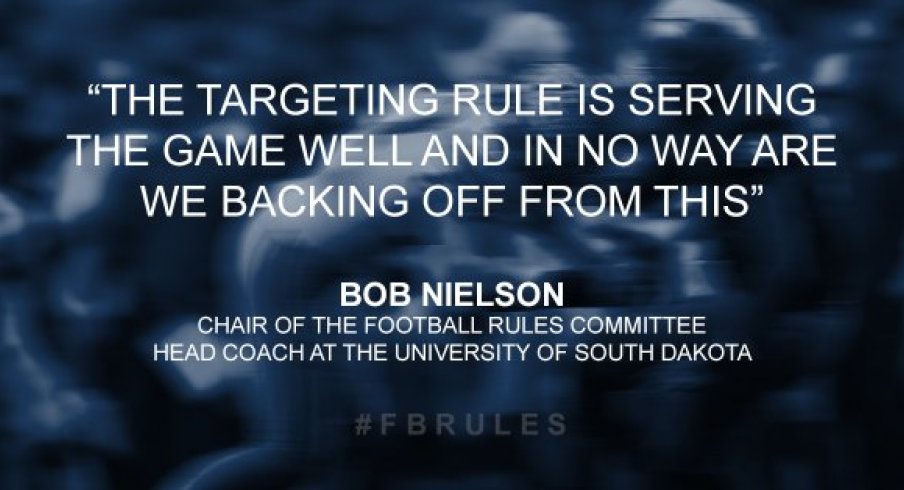Ohio State, like many other college football teams, has dealt with the repercussions of a start player getting ejected from a game for targeting once the NCAA implemented the rule prior to the 2013 season.
Game officials ejected star corner Bradley Roby in Ohio State's eventual 34-24 victory over Iowa in October 2013, and two-time All-American defensive end Joey Bosa saw his Buckeye career come to an abrupt halt on New Year's Day in the first quarter of a 44-28 victory against Notre Dame in the Fiesta Bowl.
Thursday, the NCAA football rules committee approved a proposed change that gives more power to the review official to "enhance student-athlete safety," among other regulations.
From ncaa.com:
After reviewing numerous video examples and receiving strong feedback on its annual rules survey, the committee voted to expand the authority of the instant replay official, requiring them to review all aspects of targeting fouls. Additionally, the instant replay official will be able to stop the game and create a targeting foul in situations where an egregious action has occurred.
In a small number of cases, the committee believed players were incorrectly disqualified from games. The elements of targeting that replay officials will watch for include launching and forcible contact to the head, among other factors.
“The targeting rule is serving the game well, and has enhanced player safety,” said Bob Nielson, chair of the committee and head coach at the University of South Dakota. “Because this is such a severe penalty, we are instructing replay officials to review plays to ensure that the required elements of targeting exist. We are also adding the ability for the replay official to stop the game when a potential targeting foul is not detected on the field.”
The committee also approved the use of electronic devices "for coaching purposes in the press box and locker room during the game," but not on the sideline. It also elected to tell game officials to "stringently enforce" the 3-yard limit for ineligible receivers downfield.
In addition to the targeting rule adjustment, three other areas for player safety were the focus of the NCAA football rules' committee meetings in Orlando this week:
- The rules dealing with low blocks were adjusted to prohibit a player who leaves the tackle box from blocking below the waist toward the initial position of the ball.
- The rules pertaining to a defenseless player will include a ball carrier who has clearly given himself up by sliding feet first.
- And, the deliberate tripping of the ball carrier (with the leg) was approved as a foul.
The committee will submit its proposals next week to the Playing Rules Oversight Panel, which is scheduled to approve or deny them March 8. If approved, the changes will be enforced in the 2016 season.
